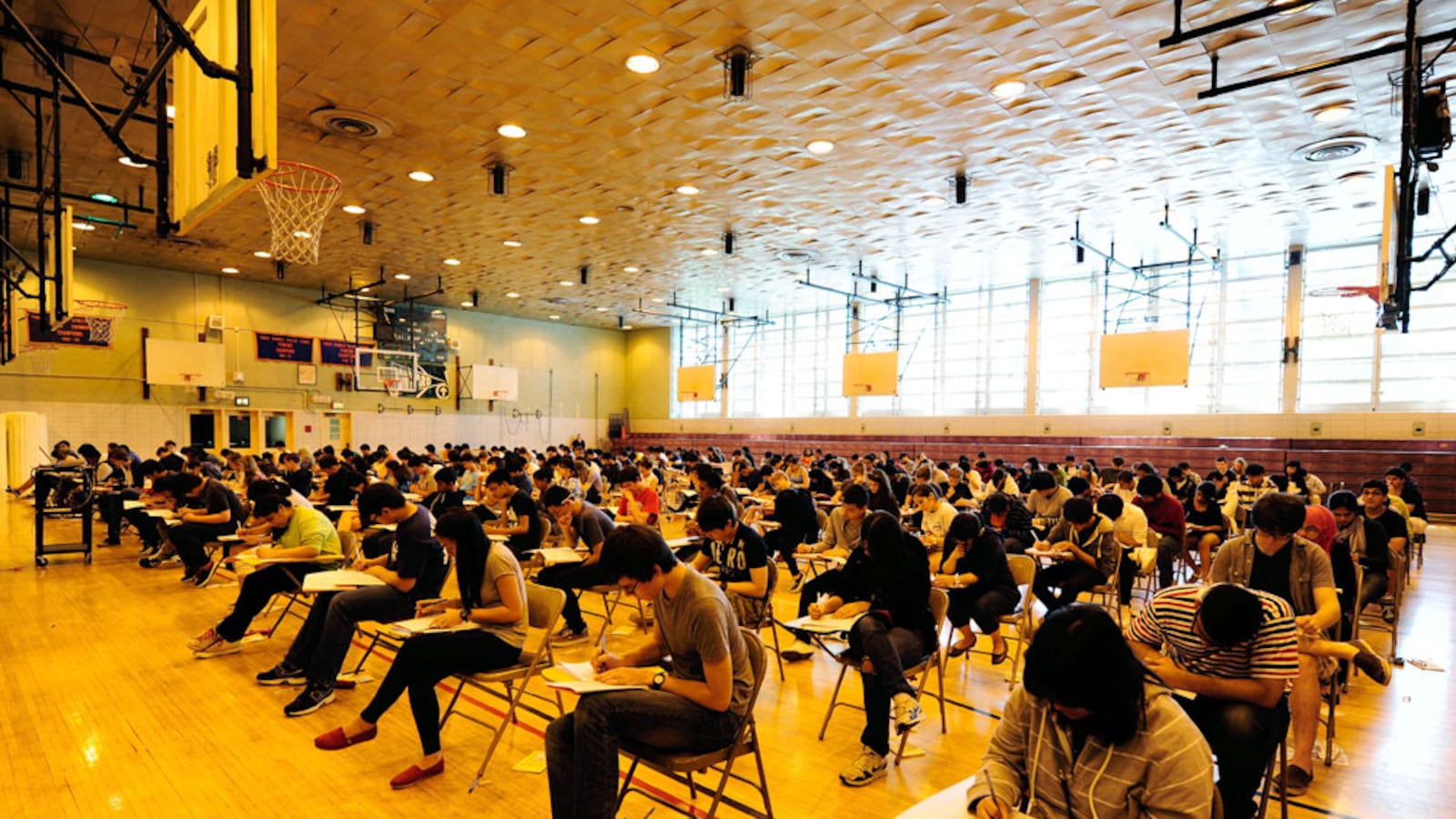Last June, city officials rolled out a series of initiatives that were supposed to address an alarming lack of diversity at the city’s elite specialized high schools, where admission is determined by a single test.
To improve access to those eight schools, education officials expanded a program that gives students just below the cutoff a chance to be admitted. They offered the Specialized High School Admissions Test (SHSAT) on a school day at a handful of middle schools in underrepresented communities. They boosted public test prep programs and outreach to increase the number of students who take the exam.
But this week, the city announced that there was virtually no change in the number of black or Hispanic students offered admission to schools like Stuyvesant and Brooklyn Tech — and advocates weren’t surprised. They have repeatedly asked Mayor Bill de Blasio to push for an overhaul of the admissions system.
“It’s a paradox to think that some people aren’t doing well because some families aren’t getting into test prep, so we need more test prep,” said Lazar Treschan, youth policy director at the Community Service Society. “Test prep is the problem.”
Despite the city’s efforts to encourage more students of color to take the SHSAT, fewer black students took the exam this year, and represented a slightly smaller share of test takers. And even though the city boosted Hispanic student participation in the test by 544 students — a 9 percent increase — just 10 additional Hispanic students passed.
Overall, the proportion of admissions offers that went to black and Hispanic students this year went almost unchanged at 10.3 percent, a population that represents roughly 70 percent of the city’s students. Meanwhile, just over 80 percent of offers went to white and Asian students, who comprise roughly 30 percent of the student body.
Education department spokeswoman Toya Holness acknowledged “we have a lot more work to do,” but officials said the numbers also reveal “encouraging” trends.
They point to data that show outreach has prompted more students to take the test in districts across the city, and of the 28,000 students who took the test, over a thousand of them took it through a pilot program that offered it on a school day.
Still, some of the city’s reforms have not tended to benefit underrepresented populations. The Discovery Program, which offers admission to some students just below the cutoff, has in the past helped more white and Asian students than black and Hispanic ones.
A number of elected officials and advocates have pushed for a more systematic plan to integrate specialized high schools by guaranteeing a spot for the city’s highest-performing students without regard to the SHSAT, which experts say could double the share of black and Hispanic students at specialized high schools.
“The ticket is going to have to be to look at alternative measures of academic performance” such as state tests and grades, said Sean Corcoran, an NYU professor who wrote a report on the lack of diversity at specialized high schools.
That path is not without roadblocks. There is some debate about whether the city could make changes at five of the eight specialized schools unilaterally, but changing the admissions policy at all eight schools would require a change in state law. So far, de Blasio — who promised to address the issue in his bid for mayor — has been reluctant to push for it.
“The leadership in integration citywide has not come from the [education department], it has come from districts and school leaders,” Treschan said. “We need the DOE to lead the charge on this one.”

